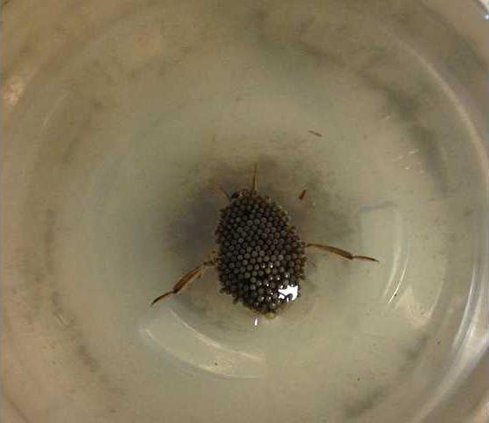Kansas Department Wildlife, Parks and Tourism educator
The water of Cheyenne Bottoms is teeming with life, both above and below the water’s surface. Recent rains and average temperatures have provided perfect conditions for a population explosion of an amazing variety of macroinvertebrates – animals without backbones you can see with your eyes.
From water striders skating across the water’s surface to midge bloodworms in the mud, insects rule the water. There are plenty of other interesting invertebrates – crayfish, mussels, snails – to name a few but insects dominate.
As dragonflies zip above the water, sweeping midges and mosquitos from the air, their young hunt below the water’s surface, ambushing mosquito larva, other aquatic insects and even tadpoles and small fish with a special harpoon-like mouth part. When the hapless victim swims by they shoot out their lower lip, which is double-hinged and spiny on the end, snagging the prey. The “harpoon” remains folded under the naiad’s head when not in use.
Another aquatic predator, the toe-biter, has an interesting way to protect its eggs. The female deposits her eggs on the male’s back. Under magnification, the eggs look like lines of grapes. The male protects the eggs from predators and takes them to the water’s surface for oxygen. He also moves the water around his body, keeping the eggs oxygenated.
A member of the giant water bug family, the toe-biter can give a good nip and feeds on other insects in the water. They also play dead when threatened.
Aquatic invertebrates utilize several strategies to obtain oxygen. Some use gills, such as dragonfly and damselfly naiads, others visit the surface and trap air bubbles for use underwater. A weaker, smaller version of dragonflies, delicate damselfly naiads, sport three feathery gills at the end of their bodies or abdomens.
Whirligig beetles, those shiny black beetles that spin around the water’s surface, carry an air bubble located on the end of their abdomen. They stay under water for long periods, returning to the surface for another bubble and to scavenge dead insects. Truly adapted for aquatic living, whirligig’s have two pair of eyes located to see above and below the water’s surface.
Still another aquatic insect, the midge bloodworm, stores oxygen in a hemoglobin-like substance. Hence the name bloodworm, due to the similarity to our blood and the larva’s blood-red color.
These are just a few of my favorite aquatic macro-invertebrates. There are many more, each with an interesting behavior. Grab a can of insect repellant to ward off the mosquitos and spend some time watching the macroscopic world of aquatic insects. All you need is a small bucket or tray filled with marsh water, a dipper and/or a small fish net. The numbers are so great all you need do is dip into or swipe through into the water and you’ll have some critters to watch. After you’re done observing, just return them to the water.
Marsh teems with small life
Wetland Explorer





